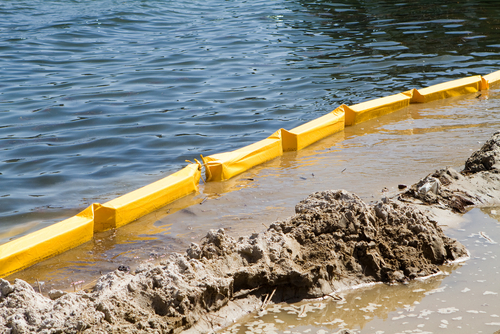EPA Levies Second Largest Civil Penalty for Alleged CWA Violations
 |
In a joint enforcement action announced in September 2014, the U.S. Environmental Protection Agency (EPA), the Department of Justice (DOJ), and the West Virginia Department of Environmental Protection (WVDEP) settled with a West Virginia-based oil and natural gas company for multiple violations of the CWA.
According to the EPA, the company was alleged to have discharged dredged and/or fill material at 15 sites in four West Virginia counties where the company was engaged in “the construction of facilities related to extraction of natural gas, including well pads, impoundments, road crossings, and pipeline crossings.” Specifically, the alleged violations impacted about 13,000 linear feet of stream and 1.329 acres of wetlands.
The first violations were discovered by the EPA in 2011 and 2012 using information that was provided by the WVDEP and the public, and through routine field inspections. In summer 2014, the company conducted an internal audit and then disclosed to the EPA alleged violations at eight additional locations, which are also being resolved through this Consent Decree.
Forget expensive calls to lawyers and consultants. With Enviro.BLR.com, you get instant access, 24/7. Try it out today and get the 2015 EHS Salary Guide, absolutely free. Download Now.
In addition to the $3 million penalty agreed to in the settlement, which is the second largest Section 404 penalty ever obtained, the company will also provide injunctive relief that the EPA estimated will cost more than $13 million and will include:
1. Restoration and/or appropriate compensatory mitigation when restoration is not feasible. In addition, the company will monitor all restored sites for up to 10 years to ensure the success of the restoration, and the consent decree also includes requirements that will permanently preserve the sites. Compensatory mitigation will, according to the EPA, “likely take the form of purchasing credits from a wetland mitigation bank located in the same, or nearby, watershed.”
2. Developing and implementing a CWA training program for all employees, contractors, and affiliates with responsibility for designing, constructing, or supervising employees of oil and gas facilities in West Virginia for 5 years after the entry of the consent decree.
3. Integrating a CWA Section 404 compliance protocol in the company’s West Virginia operating procedures. The protocol requires that the company use the services of a “qualified wetlands professional” to assess aquatic resources within any proposed limit of disturbance before submitting applications to the WVDEP for new and expansive well pad or impoundment construction that is beyond the currently approved limit of disturbance, and the West Virginia Department of Transportation for any associated access roads.
Everything You Need for Environmental Compliance
Enviro.BLR.com puts everything you need at your fingertips, including practical RCRA, CAA, CWA, hazardous waste regulatory analysis and activity, news, and compliance tools. Try it at no cost or risk and get a FREE report.
For relevant sites, the EPA said the company must also “prepare an alternatives analysis, design facilities to avoid and minimize impacts to aquatic resources, and implement construction techniques that are certified by a registered professional engineer to ensure rapid stabilization of disturbed earth while assuring appropriate erosion and sediment controls are consistent with State or local erosion requirements, and ensure that no earth disturbance occurs until appropriate permits are obtained pursuant to CWA Section 404 and applicable West Virginia law.” In addition, the company will provide training for appropriate culvert installation.
